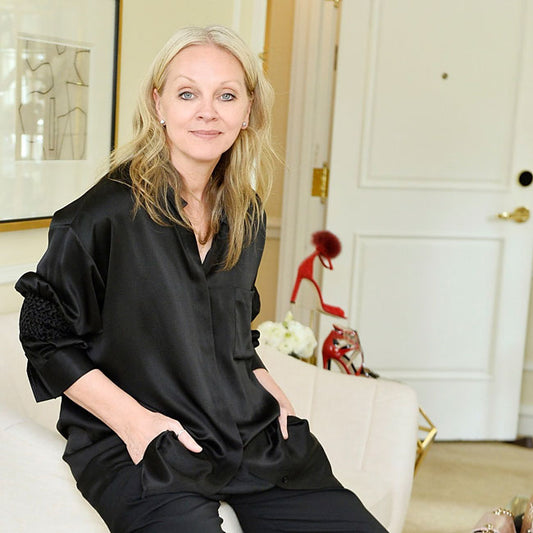British-born and -based Alistair Theodore Fennell traveled the world over, as the son of an army officer, and that early exposure to different cultures may well have informed his diverse work. Educated at Eton College, later went to art school and subsequently apprenticed at the well-known, 350-year- old family jewelry company Edward Barnard, which also made extraordinary hollowware and tabletop items. Thus, Fennell learned not only jewelry-making, but also object fabrication. He ultimately struck out on his own, and today the Theo Fennell shop is located on the Fulham Road in London, although he sells elsewhere, most notably at Harrods — where a large portion of his line is available—and around the world.
His work is quite diverse, ranging from one-of-a-kind and limited edition pieces to more widely produced charms and pendants, in popular motifs, be they skulls or stylized elephants or leopard-spotted diamond hearts. His pieces can be quite unusual — rings that have hinged, domed lids, that lift up to reveal something delightful, unexpected, charming. His more traditional bijoux can range from exotic-looking to cocktail-inspired, red-carpet- style looks. He also produces silverware, picture frames, barware, and even sterling silver lids for the ubiquitous mainstay of the British diet, Marmite.
The workmanship is top-quality, since he himself is a bench-trained jeweler and the designs are always interesting, again, since Fennell is a gifted artist. He continues to produce hollowware, as well, and also is tapped annually to create unique trophies, corporate gifts, and awards for charities and highly regarded events, such as the Monaco Formula One Grand Prix, the Dubai Championship Stakes, and the like. Fennell oversees work, start to finish; he also collaborates with clients to create bespoke pieces, starting with a design concept on paper.
In 2007, he was the subject of a show at the Royal Academy of Art in Burlington Gardens and in 2010 he launched a sterling silver line, in order to make his work more accessible to a wider audience.
Ruth J. Katz








